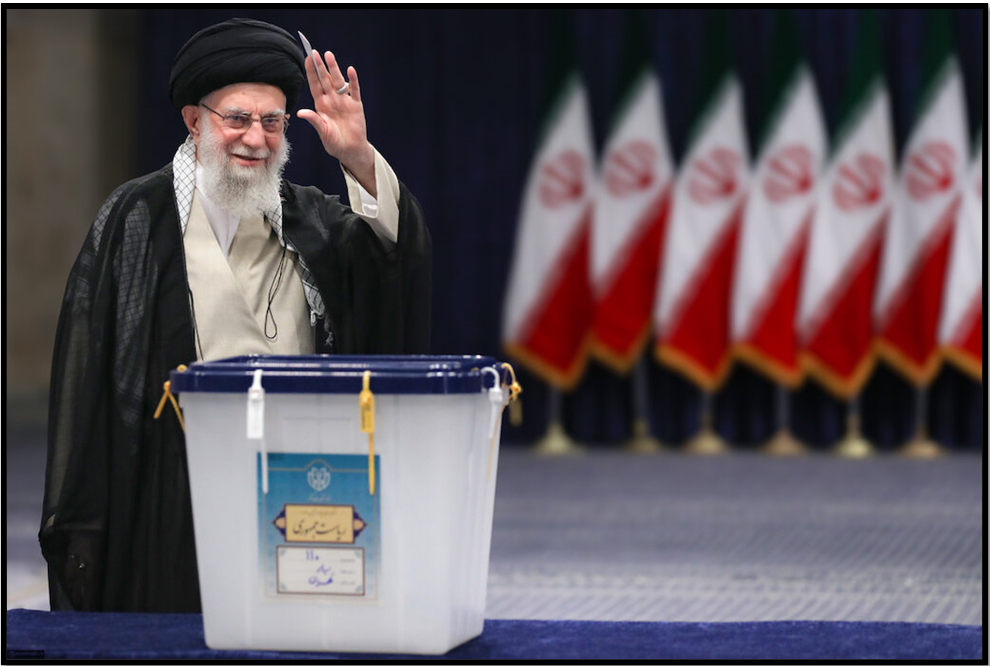
Iranians voted for a new president at some 58,000 polling stations in mosques, schools, and religious shrines – as well as 340 polling stations abroad -- on June 28, 2024. Thirty stations opened in the United States for the local Iranian diaspora. Photos of the day captured major political figures as well as young women, soldiers, ethnic minorities, Christian and Zoroastrian priests, oil and gas workers, and even a bride and a groom voting on their wedding day.
The regime sought a high turnout to prove that it had the support of a majority of the 61 million eligible voters. Supreme Leader Ayatollah Ali Khamenei cast one of the first ballots in Tehran and urged Iranians to “demonstrate the validity and honesty of the system of the Islamic Republic.” In the 2021 presidential election, the majority of the population boycotting the polls; turnout was just 48.8 percent, the lowest since the 1979 revolution. In the March 2024 election for Parliament and the Assembly of Experts, turnout was even lower – only 41 percent.
Since 2020, when hardliners won 76 percent of the 290 seats in parliament, reformists have opted not to vote, partly because the powerful Guardian Council disqualified so many reformist or centrist candidates. The Gen Z generation openly challenged the regime in anti-government protests that erupted after 2022 death of Mahsa Amini, a young woman detained for improper hijab, in police custody.
In five debates, the four candidates offered disparate approaches to political, economic, foreign policy and security challenges. Masoud Pezeshkian, the lone reformist, advocated for equal rights for women, called for repairing relations with Western powers and reviving the 2015 nuclear deal to lift stringent U.S. economic sanctions. Saeed Jalili, the most hardline candidate, backed strict hijab and urged greater self-sufficiency in a “resistance economy.” Mohammad Bagher Qalibaf, the speaker of parliament and a traditional conservative, supported negotiations on Iran’s nuclear program to lift sanctions and condemned the use of force against women who have poor headcoverings. Mostafa Pourmohammadi, a traditional conservative and the lone clerical candidate, said hijab was a “religious and legal” requirement and said the previous nuclear deal was a path to lifting U.S. sanctions. The following are photos from election day across Iran.
CANDIDATES
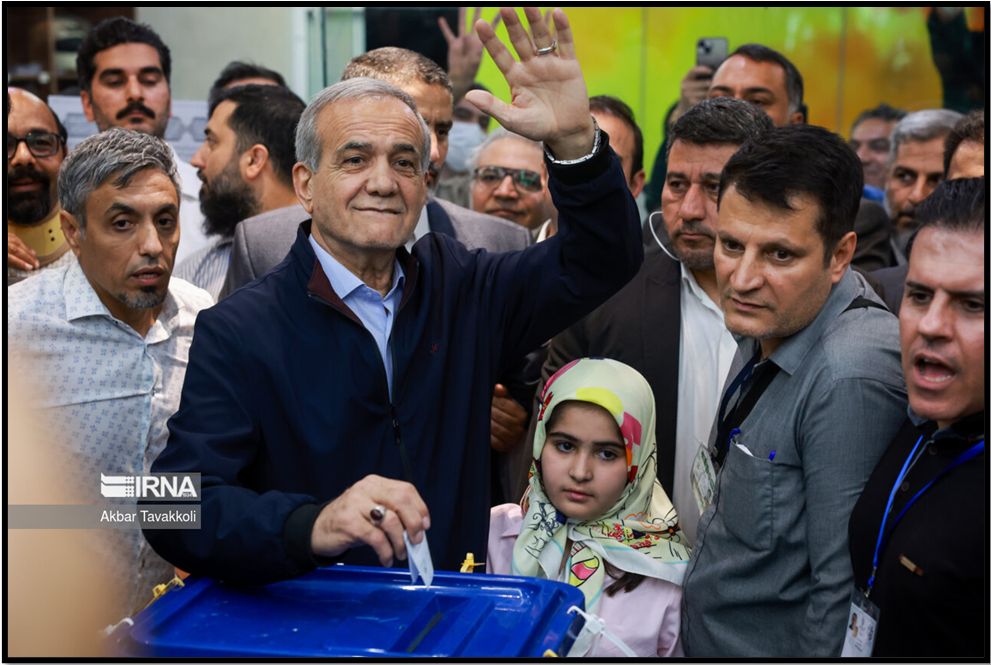
Pezeshkian, the lone reformist candidate
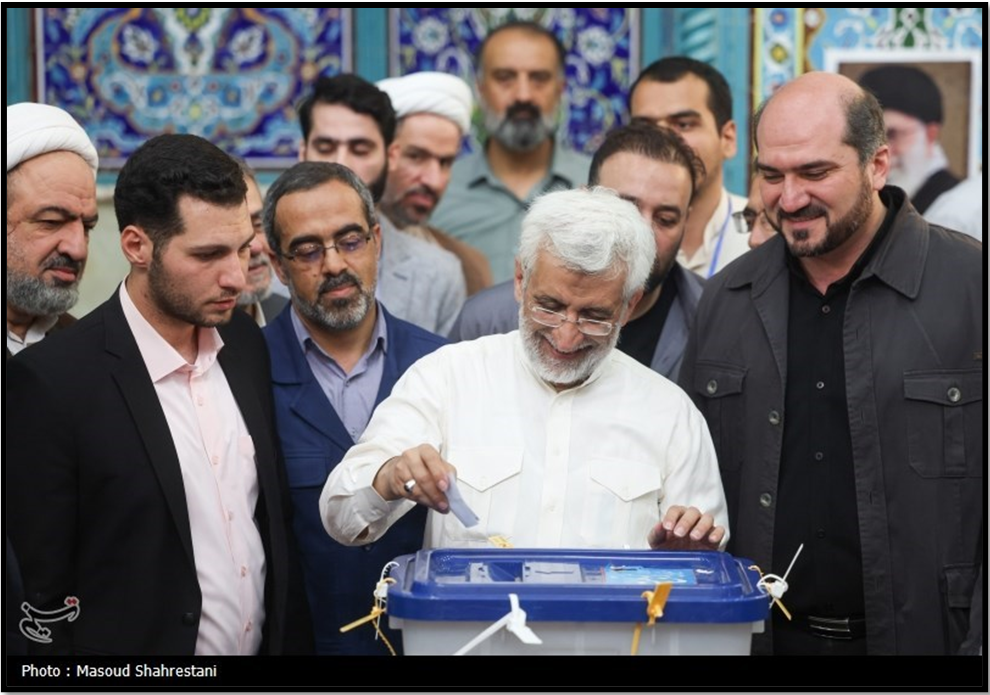
Jalili, the most hardline candidate
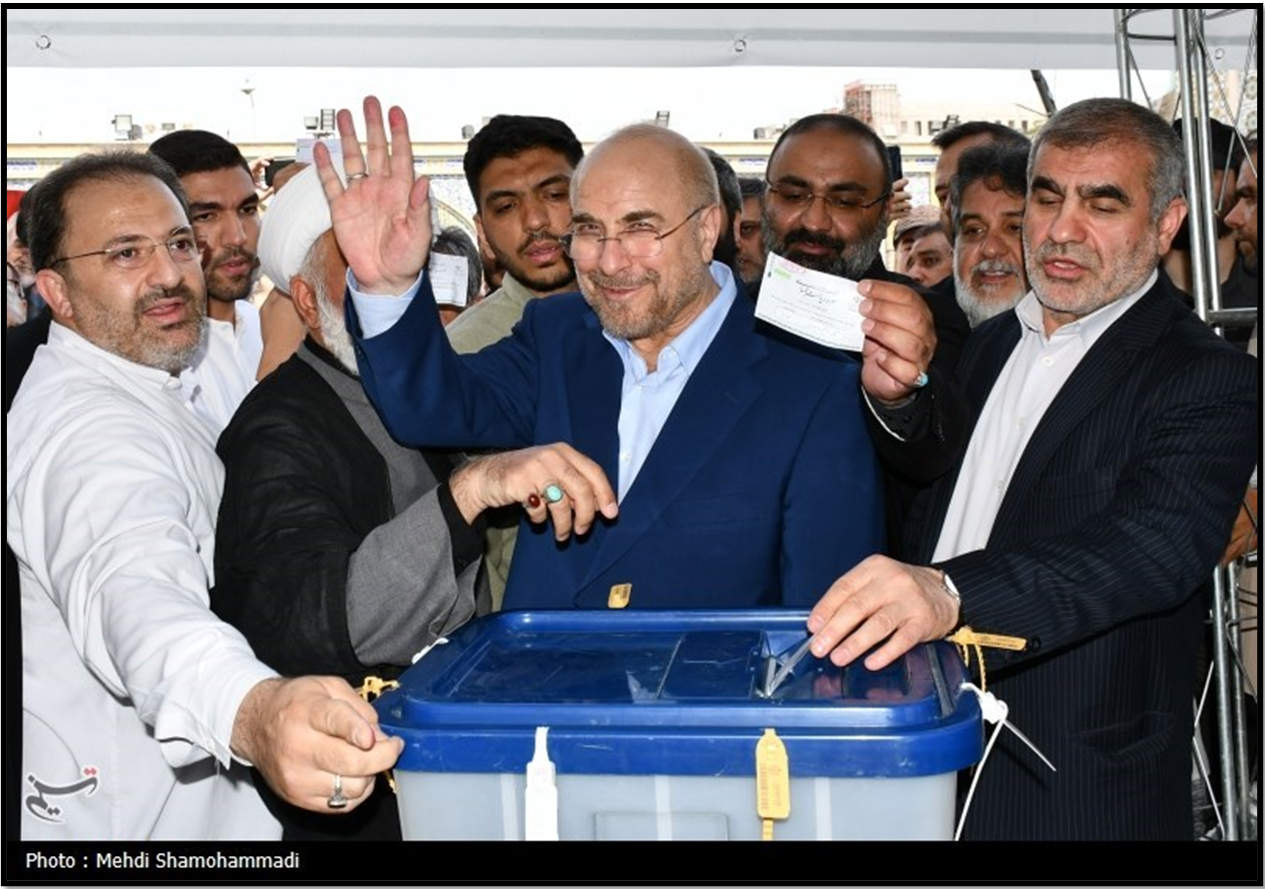
Qalibaf, a traditional conservative
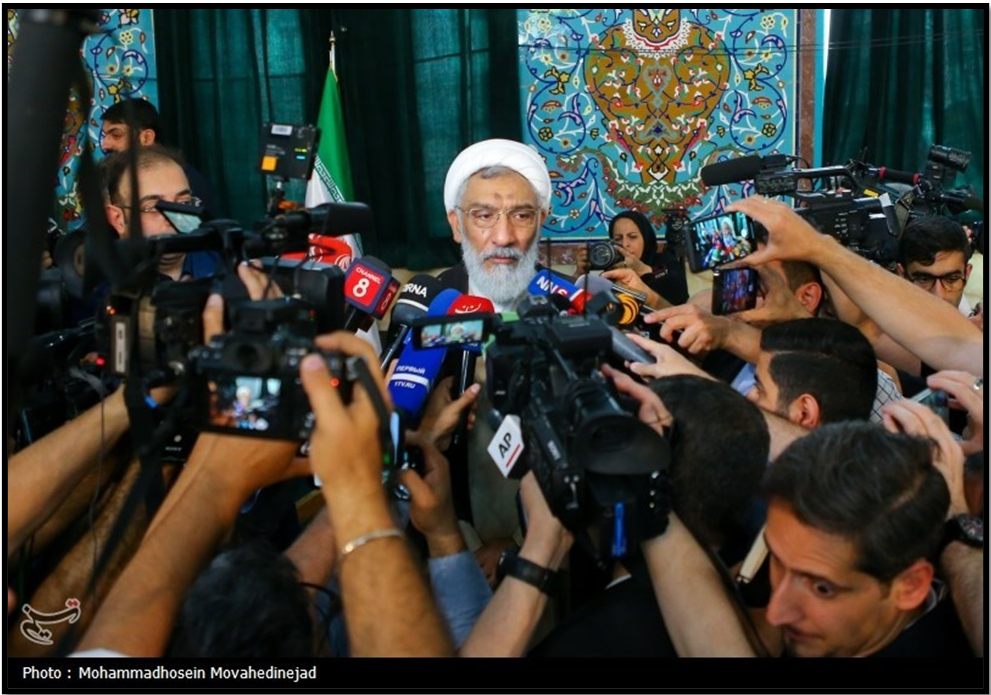
Pourmohammadi, a conservative cleric
FORMER PRESIDENTS
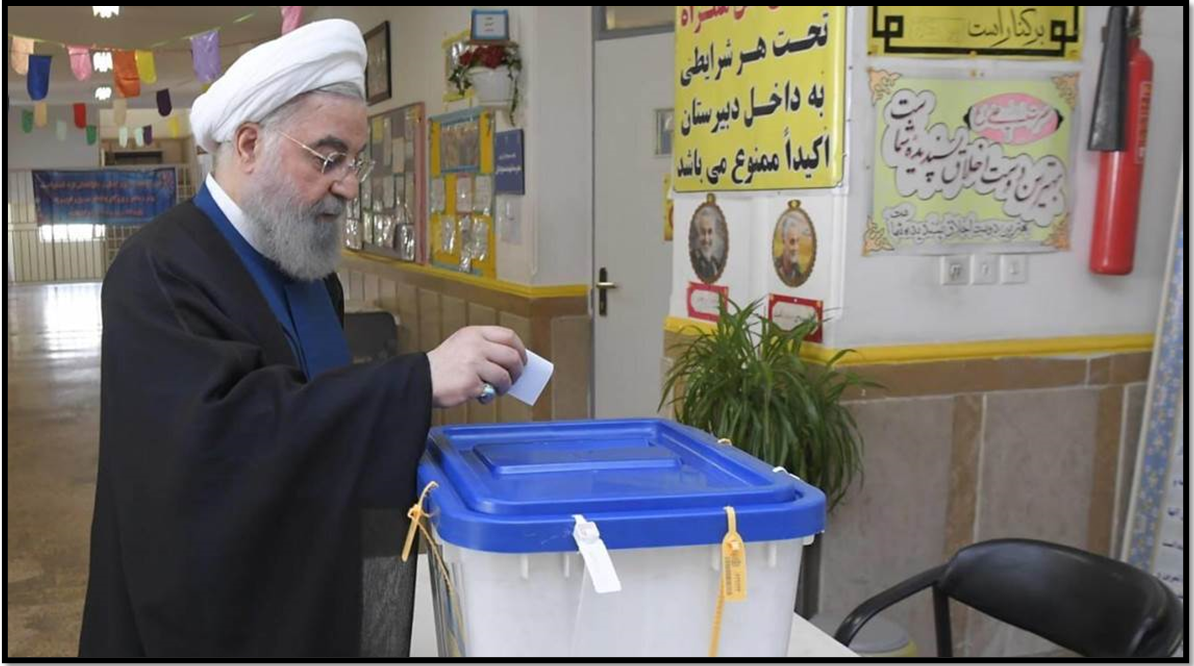
Hassan Rouhani (2013-2021), a centrist
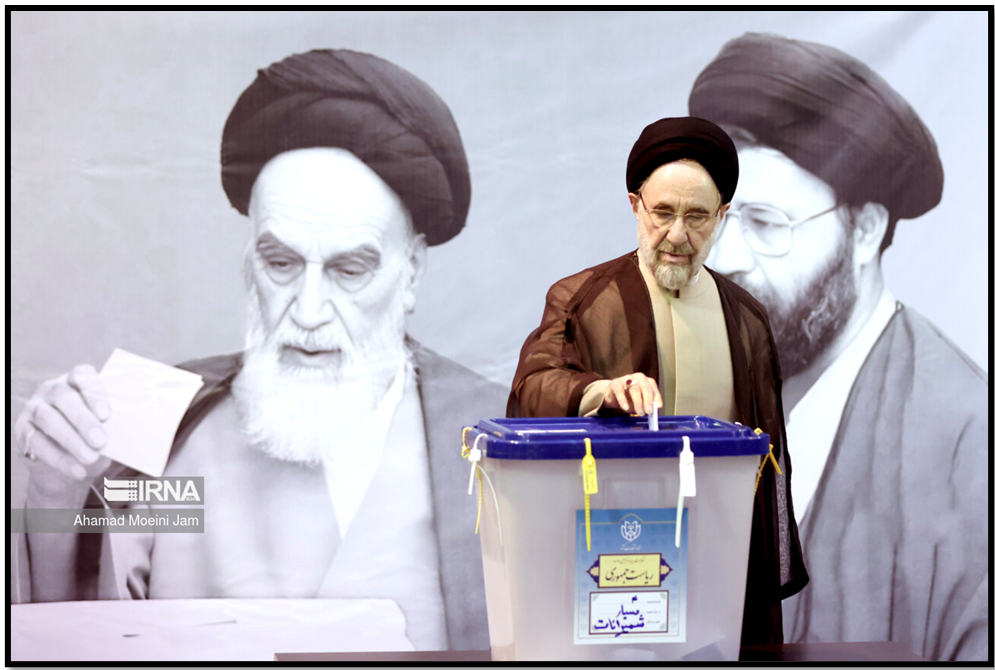
Mohammad Khatami (1997-2005), a reformist
OTHER MAJOR POLITICAL FIGURES
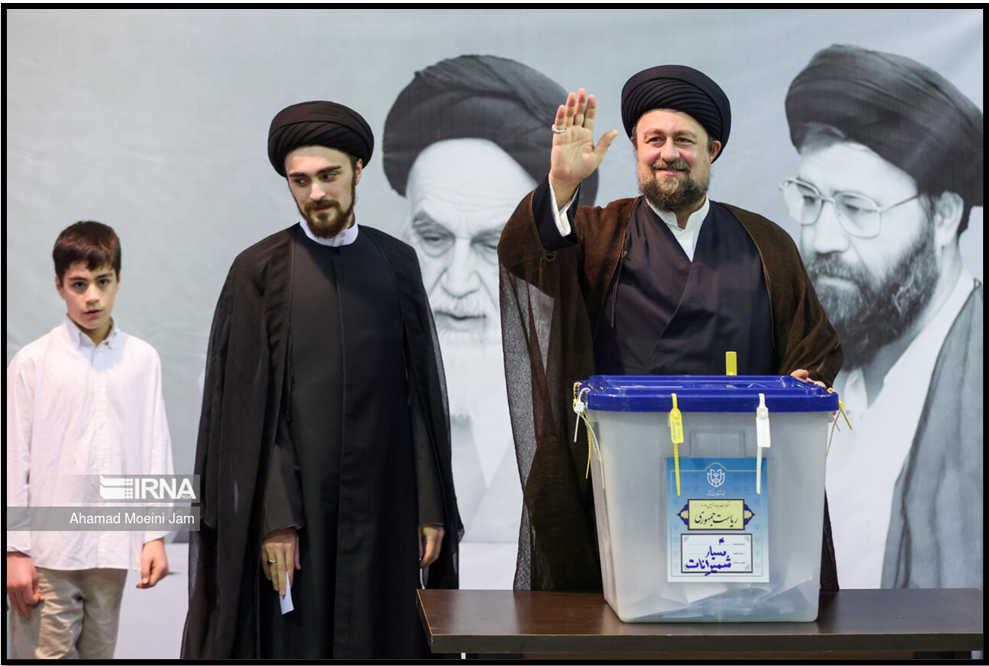
Seyyed Hassan Khomeini (right), a grandson of late revolutionary leader Ayatollah Ruhollah Khomeini, and his son, Ahmad (middle)
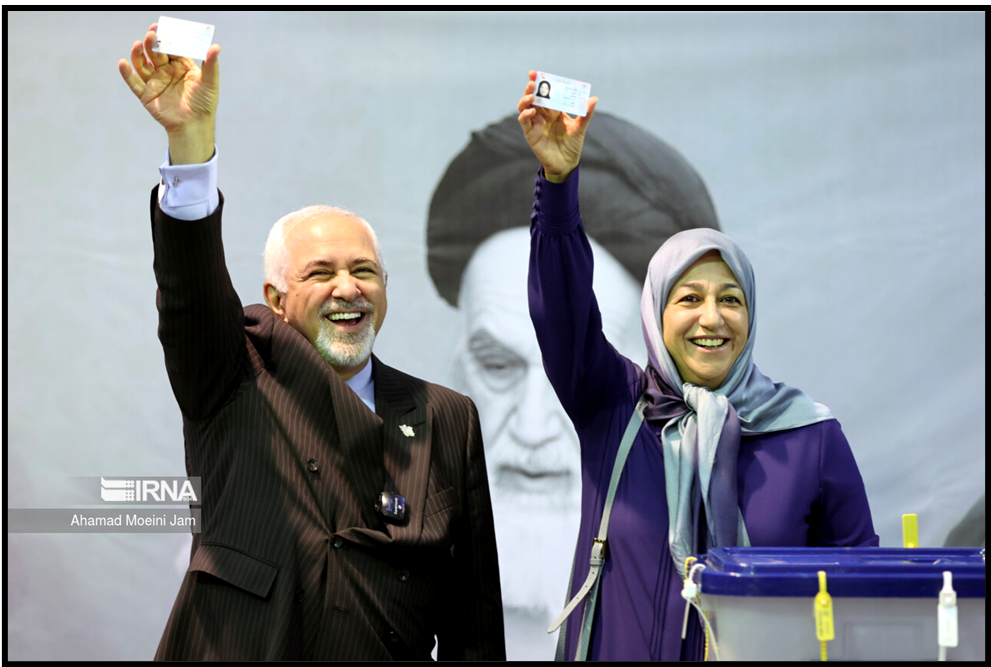
Former Foreign Minister Mohammad Javad Zarif, a Pezeshkian advisor, with his wife
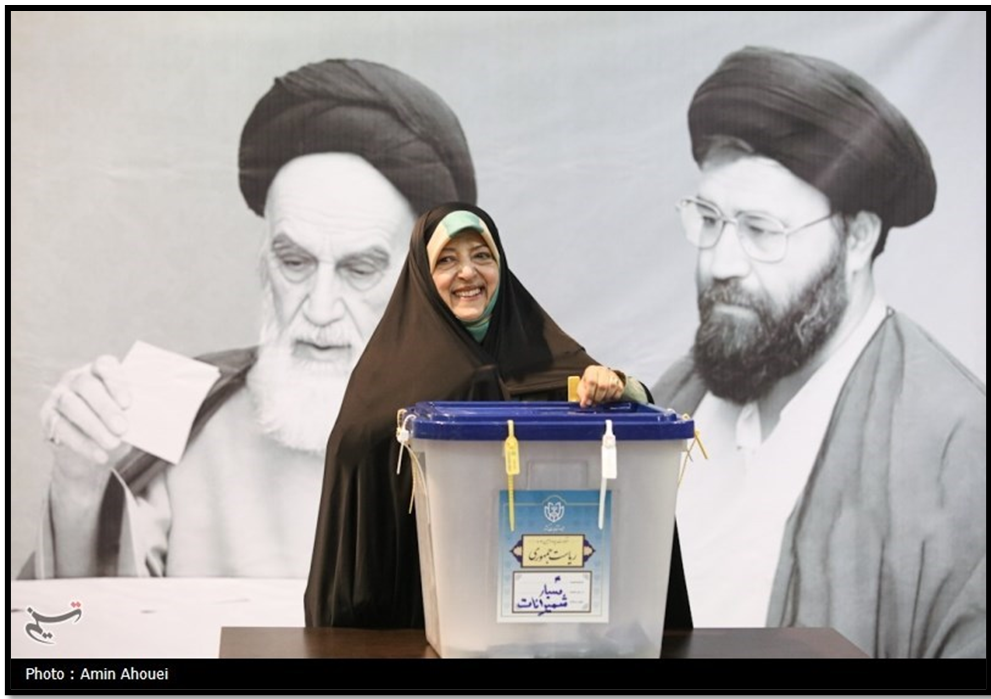
Former Vice President Masoumeh Ebtekar, a spokesperson for U.S. Embassy hostage takers
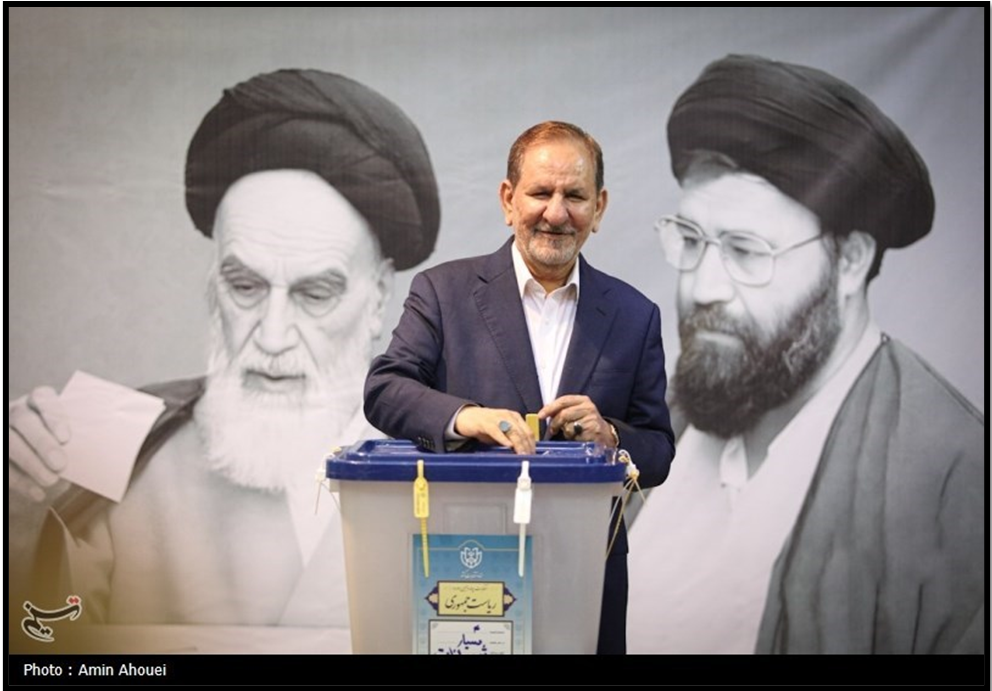
Former Vice President Eshaq Jahangiri
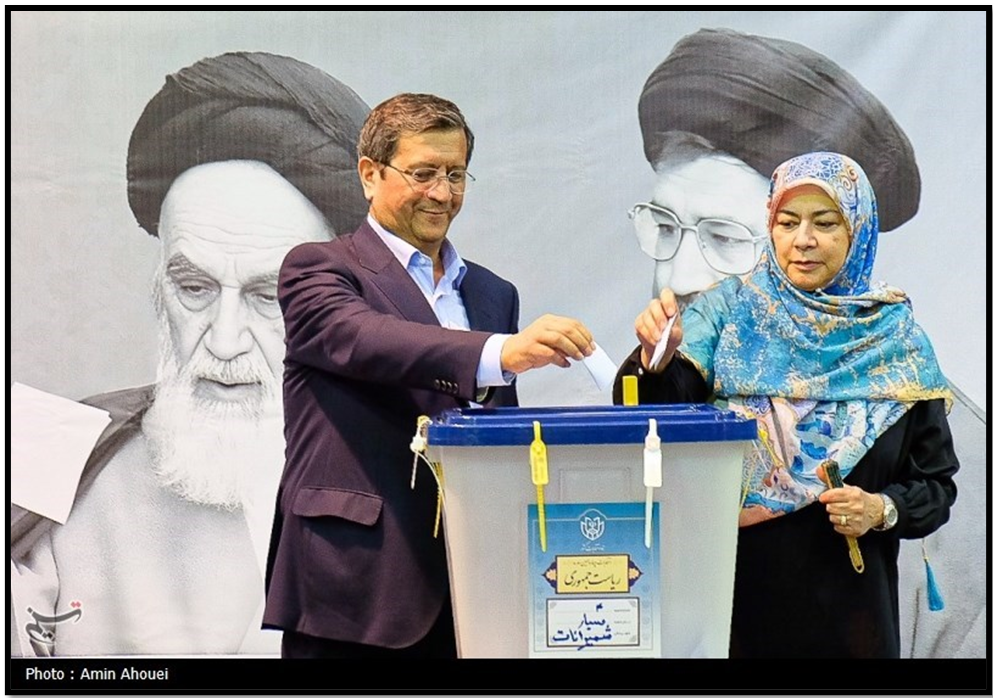
Abdolnasser Hemmati, former presidential candidate (2021) and Central Bank governor
VOTING IN TEHRAN
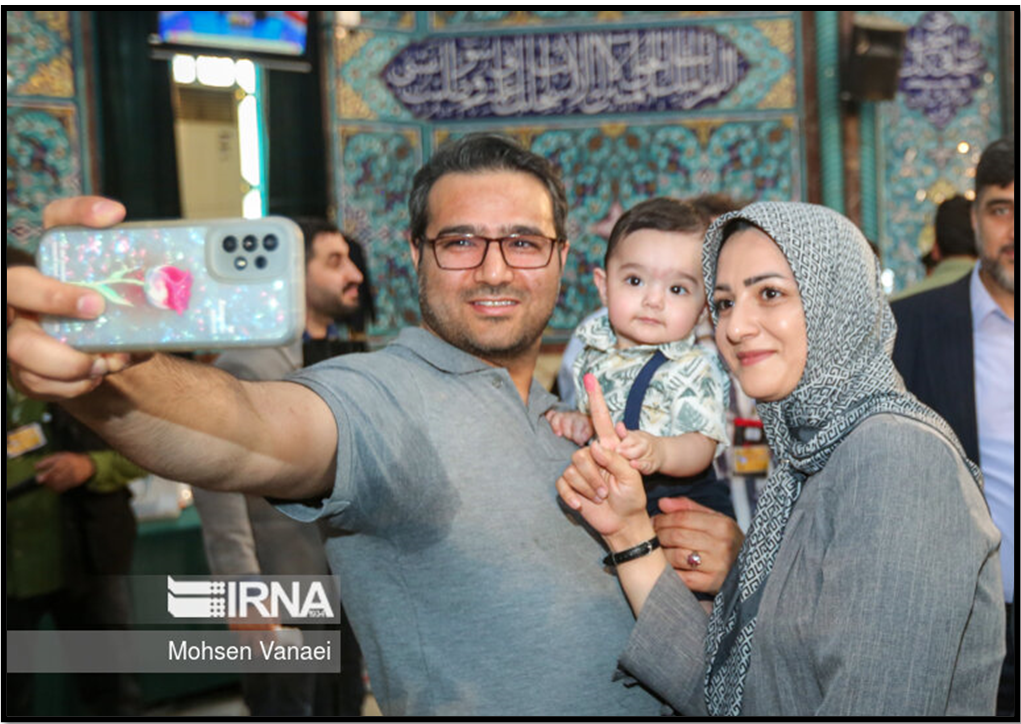
A young family takes a selfie after voting
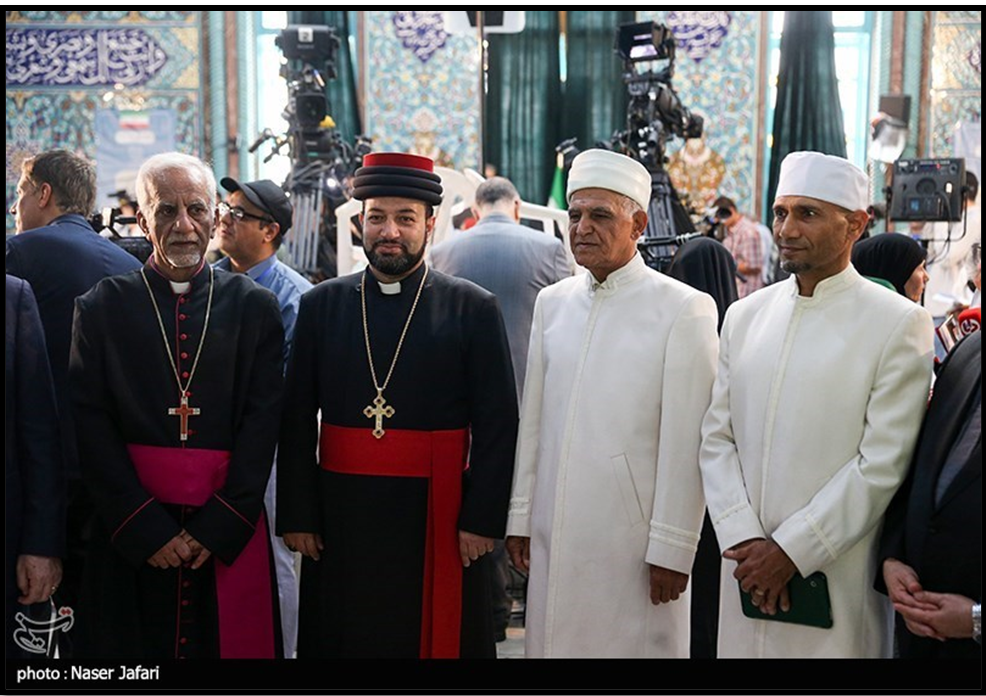
Christian and Zoroastrian clerics
VOTING IN TABRIZ

A woman in East Azerbaijan province
VOTING IN MASHHAD
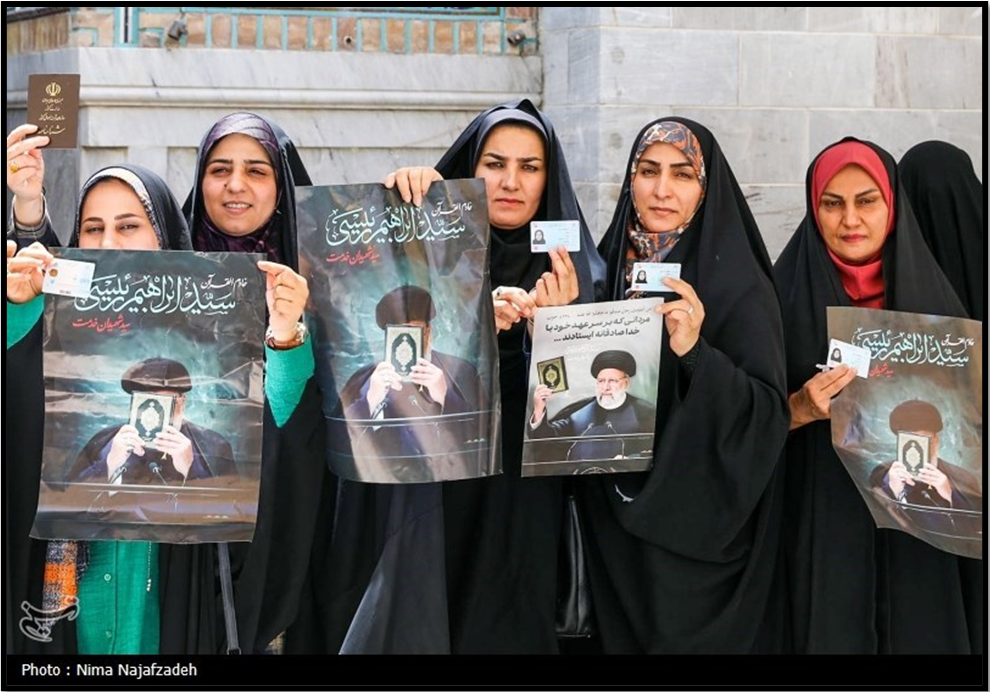
Women with posters of late President Raisi
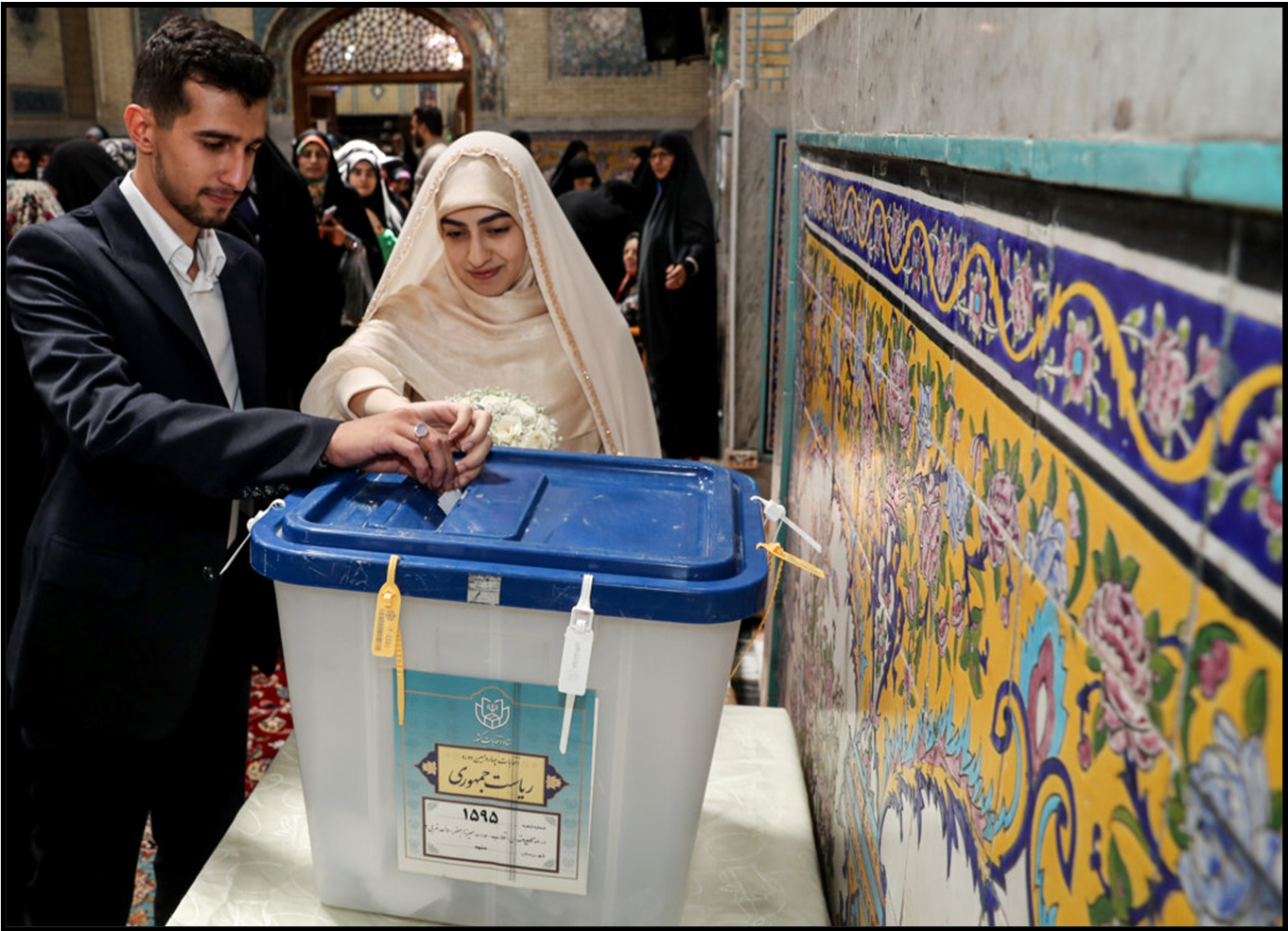
Newlyweds in the capital of northeastern Razavi Khorasan province
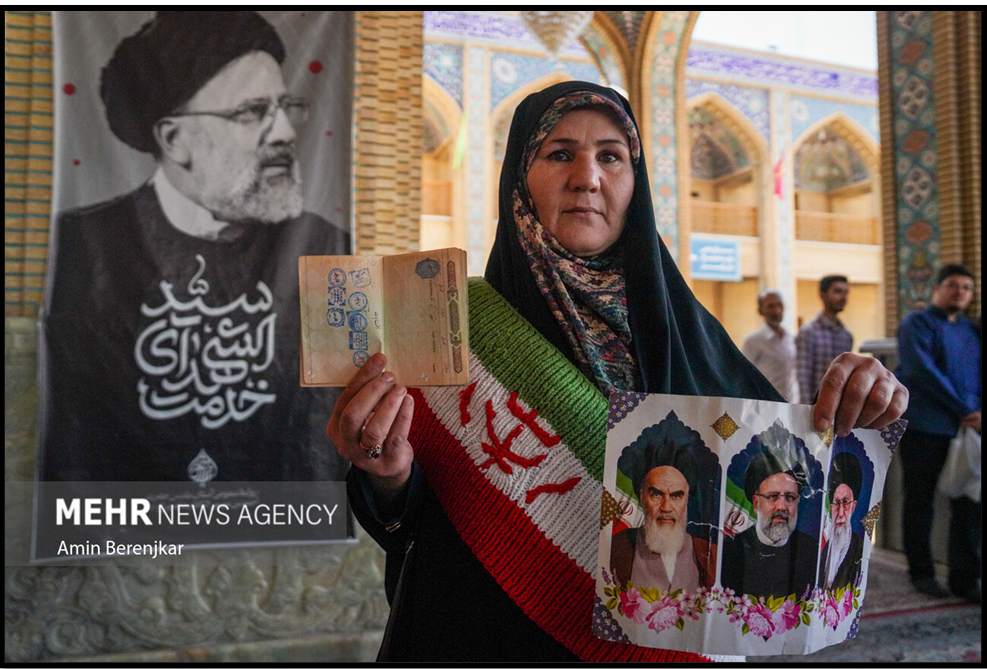
A woman with photos of Iran's past and current leaders
VOTING IN AHVAZ
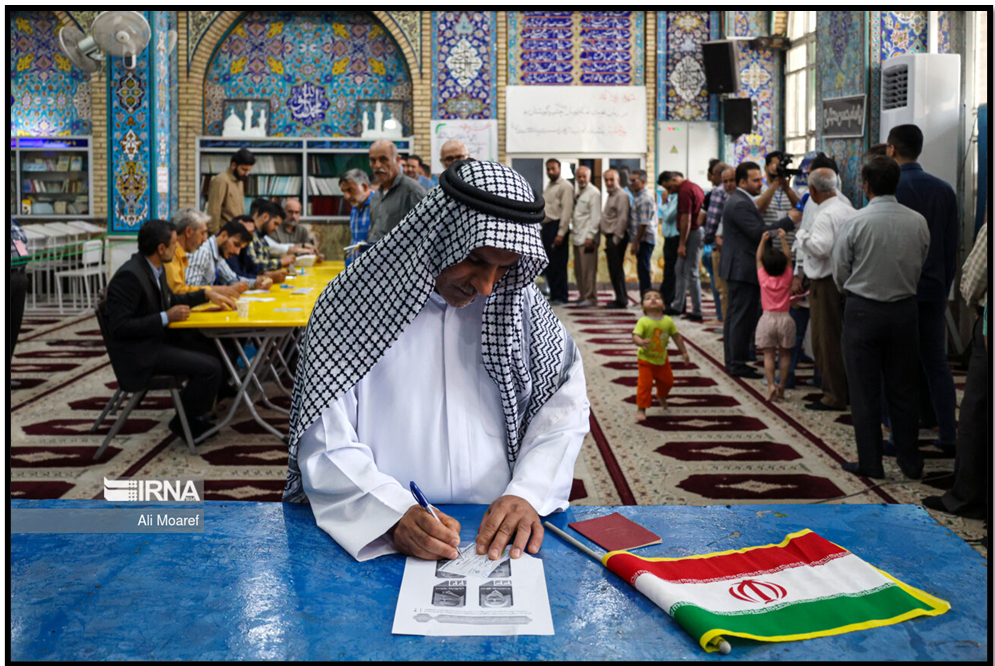
An Arab in southwestern Khuzestan province
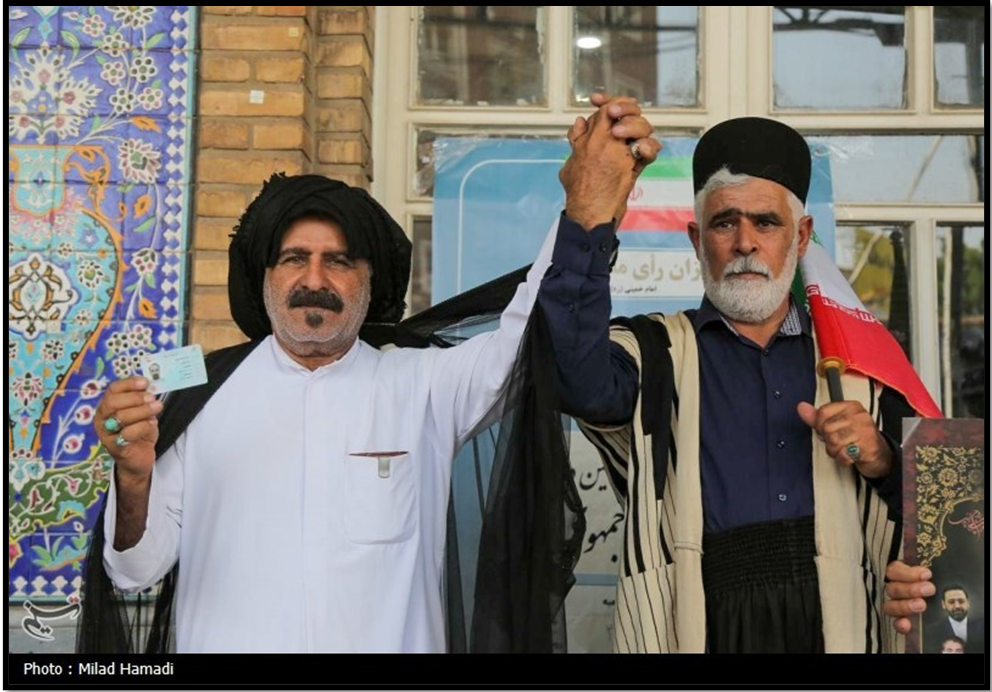
Two men in traditional clothing
VOTING IN QOM
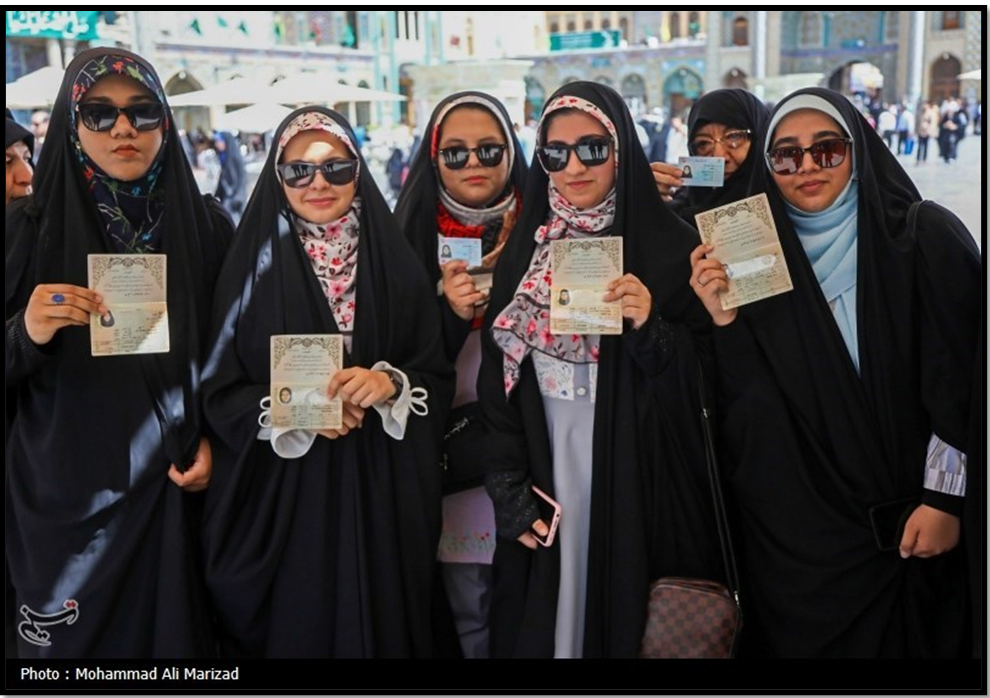
Women in the holy city of Qom
VOTING IN SANANDAJ

A Kurd in Kurdistan province
VOTING ON KISH ISLAND
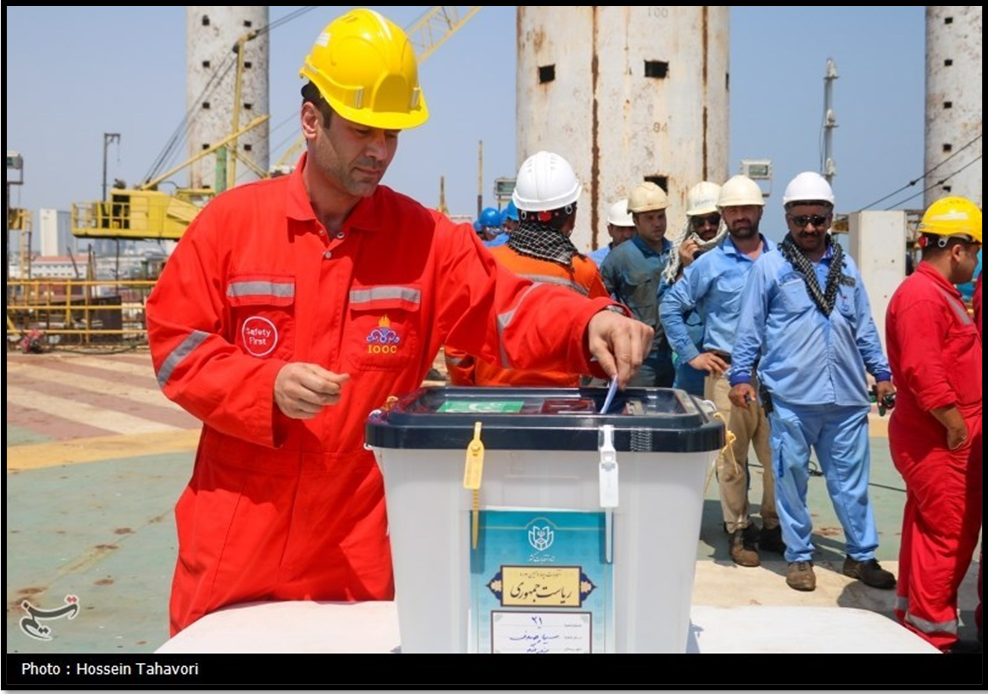
Oil and gas workers on Kish Island
ARMED FORCES

Soldiers in the conventional military
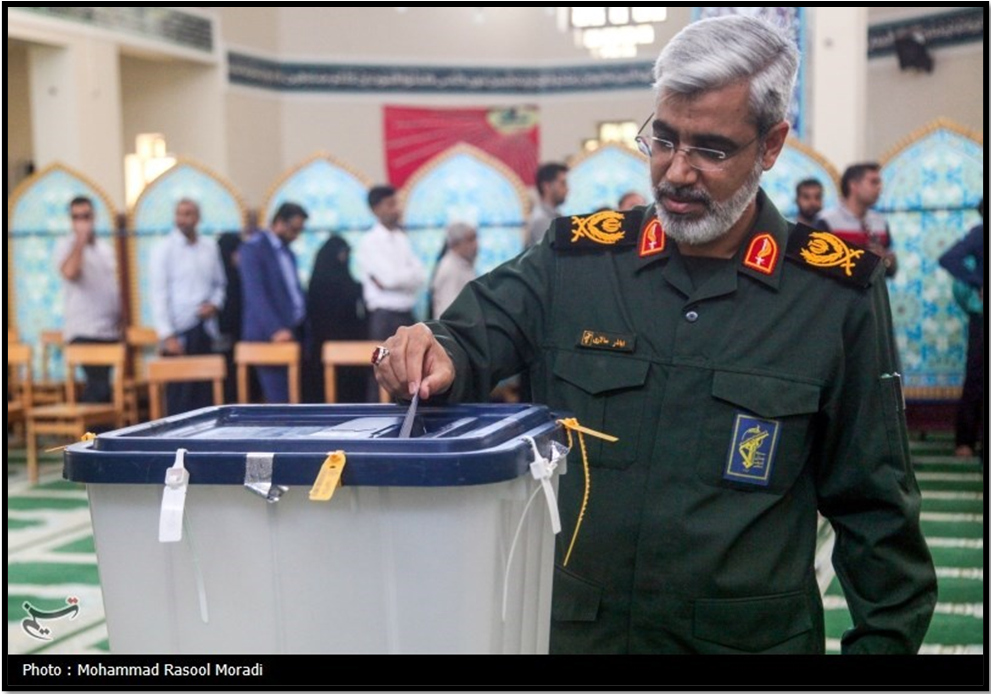
A Revolutionary Guards officer
